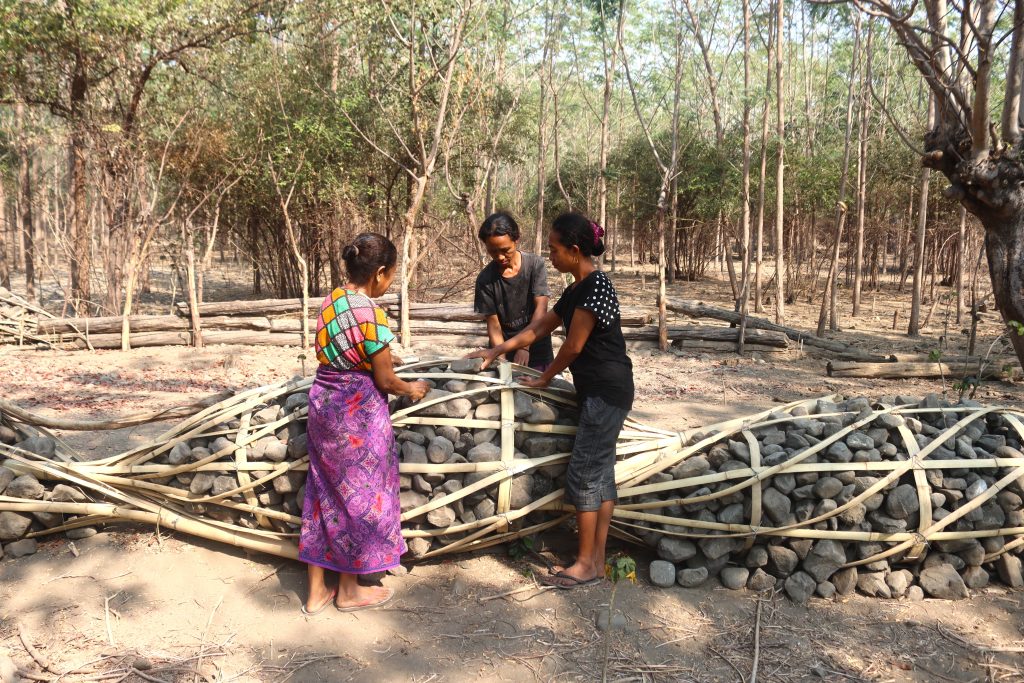Savings group initiatives empower women to lead change
In Timor-Leste’s remote disaster prone regions, women supported by the Disaster READY Project in Bobonaro, Viqueque and Oe-Cusse are leveraging savings groups’ activities to tackle immediate challenges and building long-term resilience to disasters.
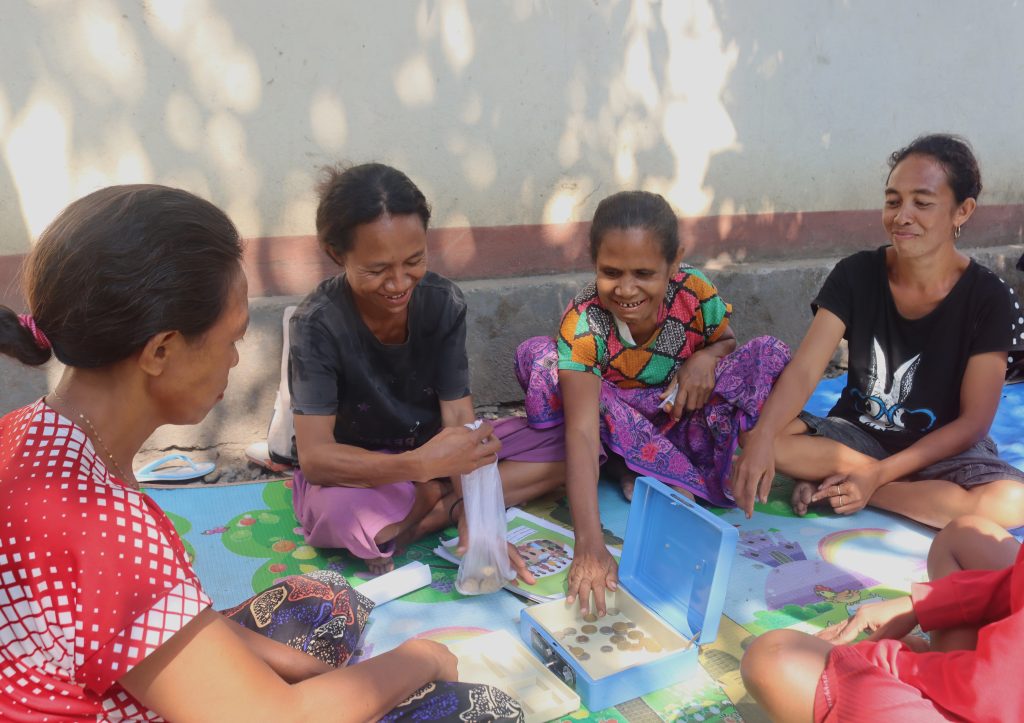
In the remote Viqueque municipality, Joanina’s village faced a protracted struggle due to the absence of a bridge and an inadequate river system. The Luca River, a vital waterway, would consistently overflow during heavy rainfalls, wreaking havoc on Joanina’s community. The consequences were profound — children were unable to reach school, market vendors struggled to sell their produce, and community members found their movements severely restricted.
Joanina, a resilient mother deeply connected to her community, couldn’t bear witnessing the perpetual suffering of food scarcity caused by natural disasters. The turning point arrived with the introduction of the Village Savings and Loans Associations (VSLA), an integral component of the Disaster READY project. This initiative breathed a new sense of hope into the community. Through this savings group, group members gained access to small-interest loans. Joanina seized this opportunity to start a kiosk business, not only supporting her family but contributing to the broader economic well-being of the community. By diversifying economic activities and creating a sustainable source of income, Joanina and others in the savings group were better equipped to withstand the impact of natural disasters.
“We now have access to loans with a small interest fee from the savings group. This is great as it can help my community in different ways. I am lucky to be able to loan money to start a kiosk business to support my family, and we also have the social fund which our group intends to use to support the community’s response and recovery from floods in the future. This fund will specifically focus on supporting infrastructure, livelihoods, and agriculture”, Joanina reflects.
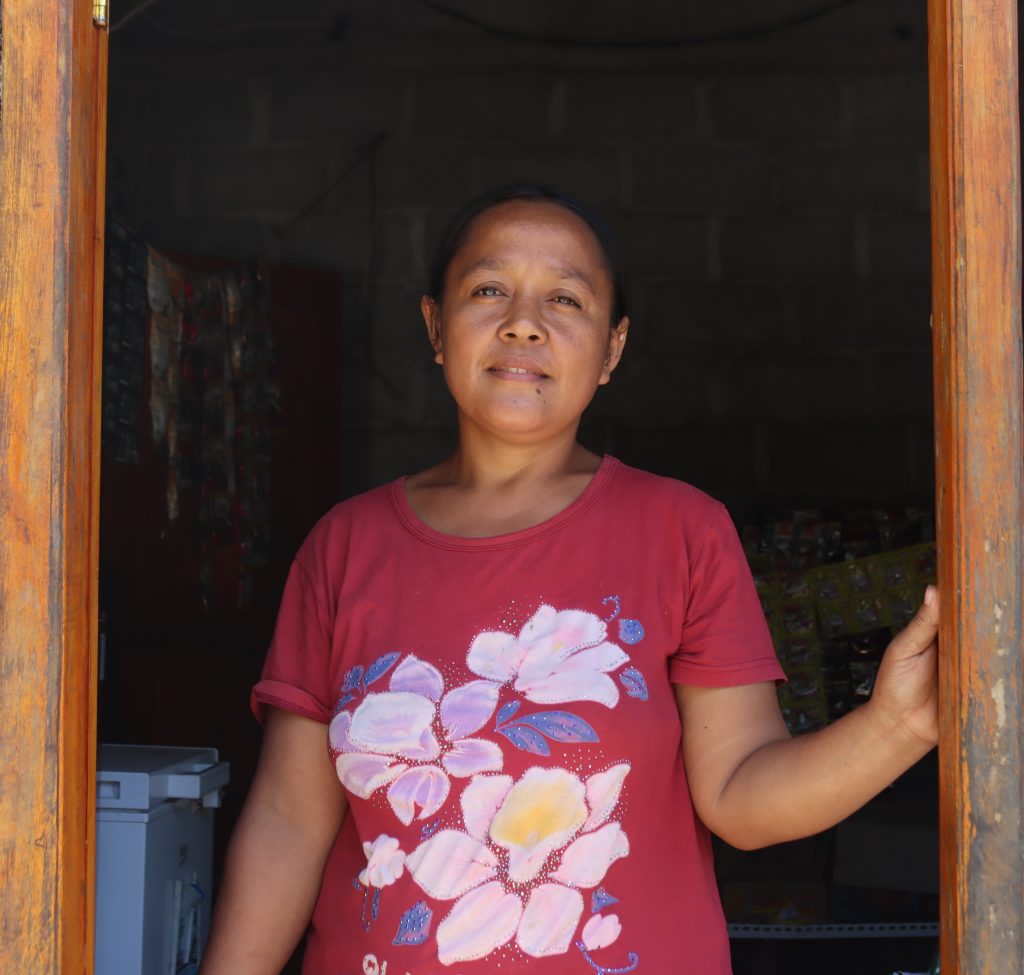
The construction of a vital new bridge in Joanina’s village is currently underway. Alongside this, the Disaster READY project is training local leaders to share early warning messages with everyone in the community, so people can get ready for disasters and find safe places quickly. This plan is connected to the savings group, making sure that the community is prepared not just physically but also in how they can respond to challenges. This proactive approach ensures that residents can prepare for potential disasters and evacuate to safe locations efficiently.
Recognising the urgency and importance of community resilience, Joanina is fervently committed to establishing a women-led savings group. Her vision is clear – the group will be a cornerstone in responding to the needs of the most vulnerable community members, specifically those with disabilities, the elderly, and children, particularly during times of crisis. Joanina sees the involvement of women in such initiatives as not just important but indispensable, and through her efforts, she aims to exemplify the significant impact they can have on community well-being and disaster preparedness.
“Now that the Disaster READY Project has assisted us in establishing the savings group and provided training in disaster risk reduction, I’m optimistic that we can enhance our preparedness for the future.”
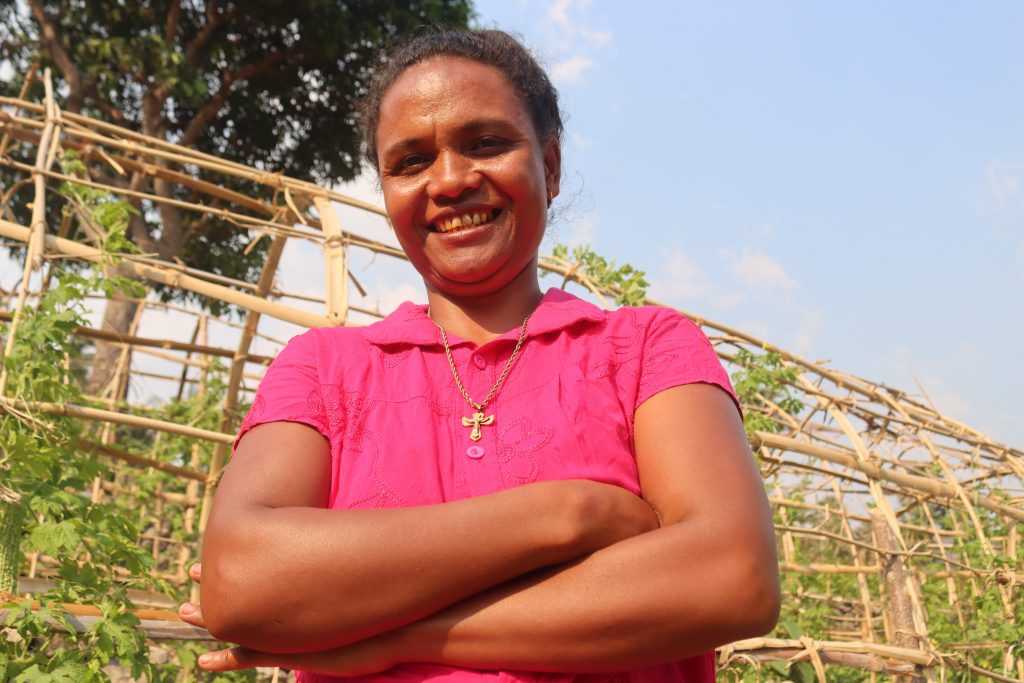
Transitioning to the challenging terrains of the Bobonaro municipality, Martinha’s village faces geographical vulnerability to flooding and landslides. Surrounded by mountains and situated at the bottom of steep terrains, with the Obulo River to the east, the community’s natural setting makes disaster preparedness and risk mitigation not only essential but truly life-saving.
“Heavy rains mean trouble to us. All the facilities such as schools, markets, and the hospital are on the other side of the village, and during the rainy season, accessing the main road becomes difficult due to frequent flooding”, explains Martinha.
Traumatised by the potential consequences, she actively warns her community to exercise caution before using the road during rainy seasons.
Despite limited exposure to capacity-building opportunities, Martinha’s unwavering dedication to her community shines. Serving as one of the delegates for the Chief of Village, she first learned about the Disaster READY project in a meeting with local authorities and advocated for her community’s involvement.
The savings group plays a crucial role during significant events like childbirth in Martinha’s community. Members contribute to a dedicated transportation fund, and when a pregnant woman requires access to a nearby health centre, the group utilises these pooled resources to cover the costs of renting transportation. The process involves transparent record-keeping, community involvement, and regular reviews to ensure the effective use of funds. This initiative not only provides practical assistance but also showcases the collective strength of the community in addressing the specific needs of its members during critical moments like childbirth.
“Before, when women in the community were due for labour, it would take so long for the ambulance to reach our village. Men would construct makeshift chairs to carry pregnant women on their heads to get to the main road and wait for the ambulance. Now, we can use loans from the savings to rent transport directly to our village, ensuring timely assistance to pregnant women”, Martinha reflects.
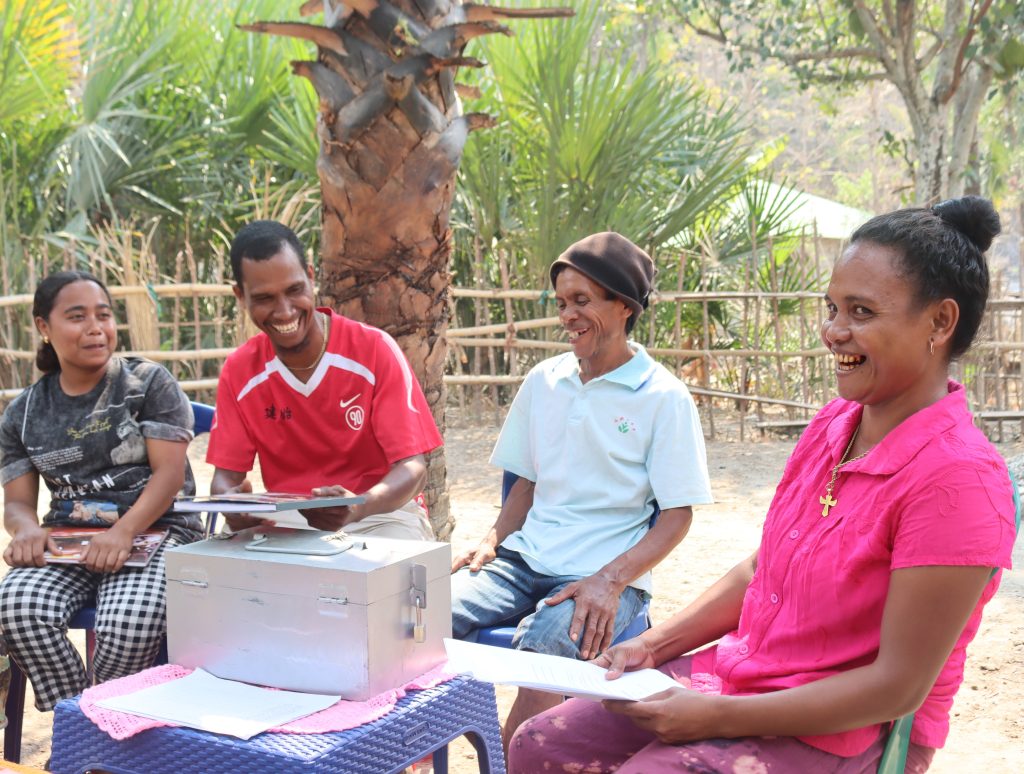
As part of the Disaster READY Project’s intervention to prepare communities for prolonged rainy seasons, vegetable seedlings were provided to Martinha’s group. This initiative is particularly crucial, enabling the community to grow a variety of vegetables directly in their farmland when mobility is restricted. The group utilises savings to fund income-generating activities, including purchasing materials for traditional textile weaving (Tais) and making chili paste for sale at the local market.
Martinha emphasises the significance of these activities in strengthening community livelihoods, stating, “I’m happy with this activity in my village; we feel like life has been brought back to our community. Other nearby villages are also expressing interest in forming their savings group, and it’s great that people are recognising the positive effects. When one community is prepared to face disasters, it’s equally important that other communities feel the same too.”
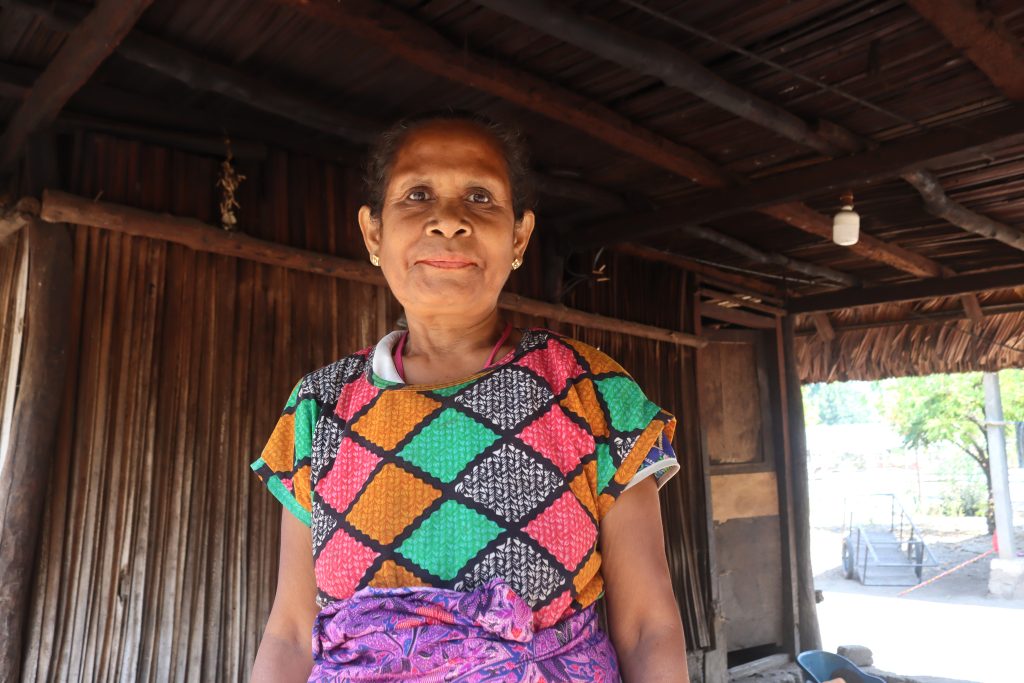
Similar to Joanina and Martinha, in the vibrant community of Oe-Cusse, Rosina and her fellow women have long depended on animal rearing and cultivating vegetable crops to sustain their families. But as weather patterns shifted and natural disasters increased, their livelihoods faced a formidable threat.
“We faced difficulties with heavy winds and floods destroying our farms and animal husbandries. We, the women of the community, decided it was time to stand up and change our dire situation.” As her farm crumbled and worries deepened, especially for her daughter who lives with a disability, Rosina found a beacon of hope—the savings group.
Since joining, Rosina has not only regained the confidence to support her family but has also returned to the fields. The savings group, more than just a financial resource, empowers women in her community to allocate funds for disaster preparedness and response efforts.
“Our group gets plant seeds from the Disaster READY project. We use them to grow veggies for ourselves and sell them at the local market. The money we make goes into the group’s safe. I’ve also taken loans to help with my animal rearing. The savings group brings peace to our community, making money easy to get when we need it.”
To protect against disasters, our local partner, BIFANO, works with us. They’ve introduced a simple flood barrier using local materials like bamboo and river rocks; its local name is Bronjon (Gabion box). With our savings, we build gabions—cages filled with stones that can withstand flowing water during rainy seasons.
“I can confidently say my group is ready for disasters. We’ve been trained and practiced emergency responses, knowing exactly what to do. The gabions we placed where water flows has protected many houses from floods. Our farming and animal rearing are doing well, ensuring a strong livelihood.”
In Timor-Leste, the Disaster READY Project has successfully established Village Savings and Loans Associations in Viqueque (5 groups), Bobonaro (4 groups), and Oe-Cusse (5 groups), comprising both men and women, including individuals with disabilities. The primary objective of these groups is to enhance community resilience and preparedness for disasters. In Viqueque, the savings groups have played a pivotal role in stimulating economic growth. Meanwhile, in Bobonaro, the groups specifically support pregnant women and contribute to overall livelihood improvement through transparent financial practices. In Oe-Cusse, the groups engage in activities such as vegetable cultivation and the construction of flood barrier.
Disaster READY is advancing local action beyond preparedness and resilience, into recovery. With systems and structures in place from the first five years, local partners are supporting communities’ to not only withstand the effects of disaster and climate change, but also equip them with the tools needed to return to life as quickly as possible.
